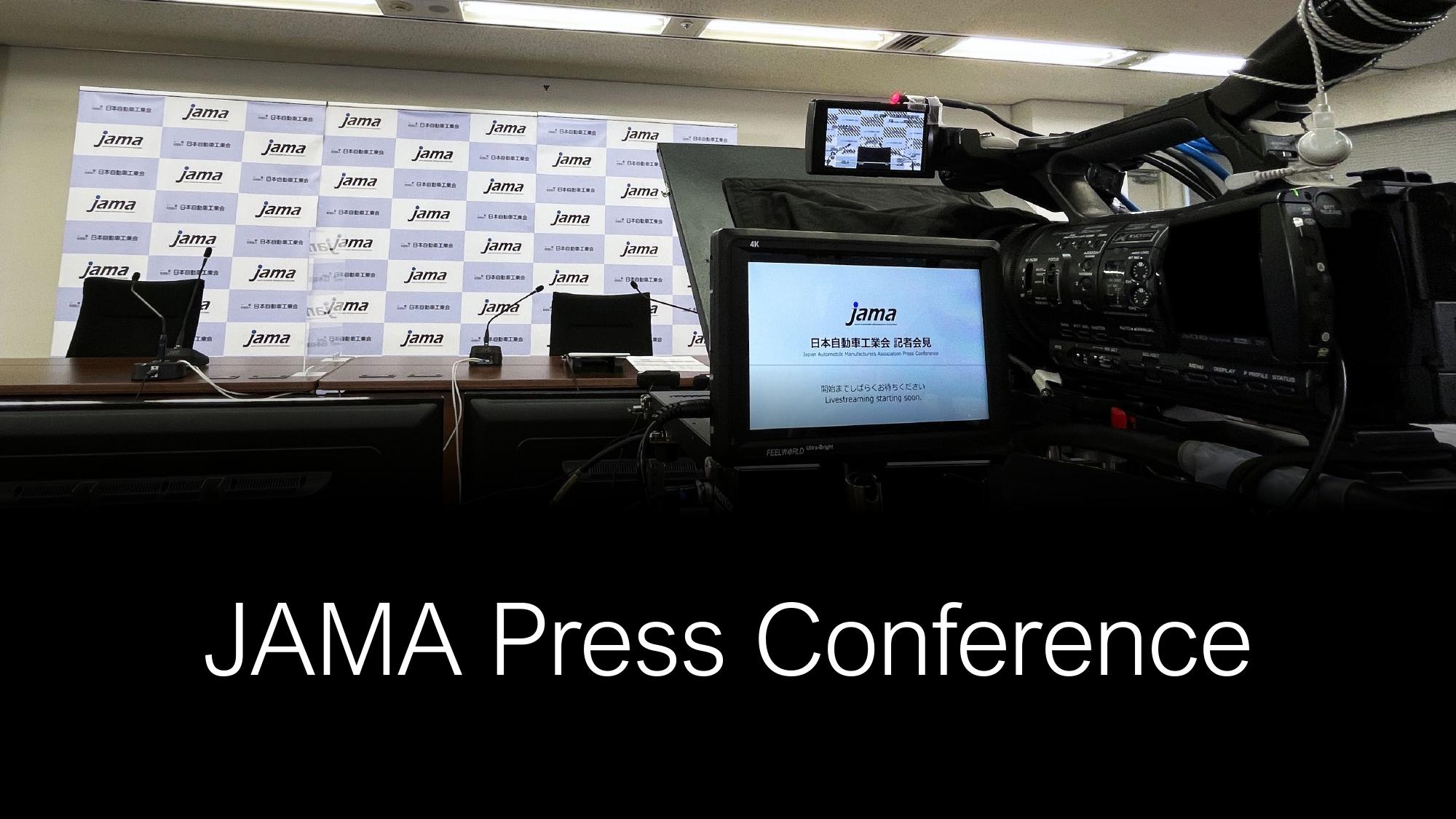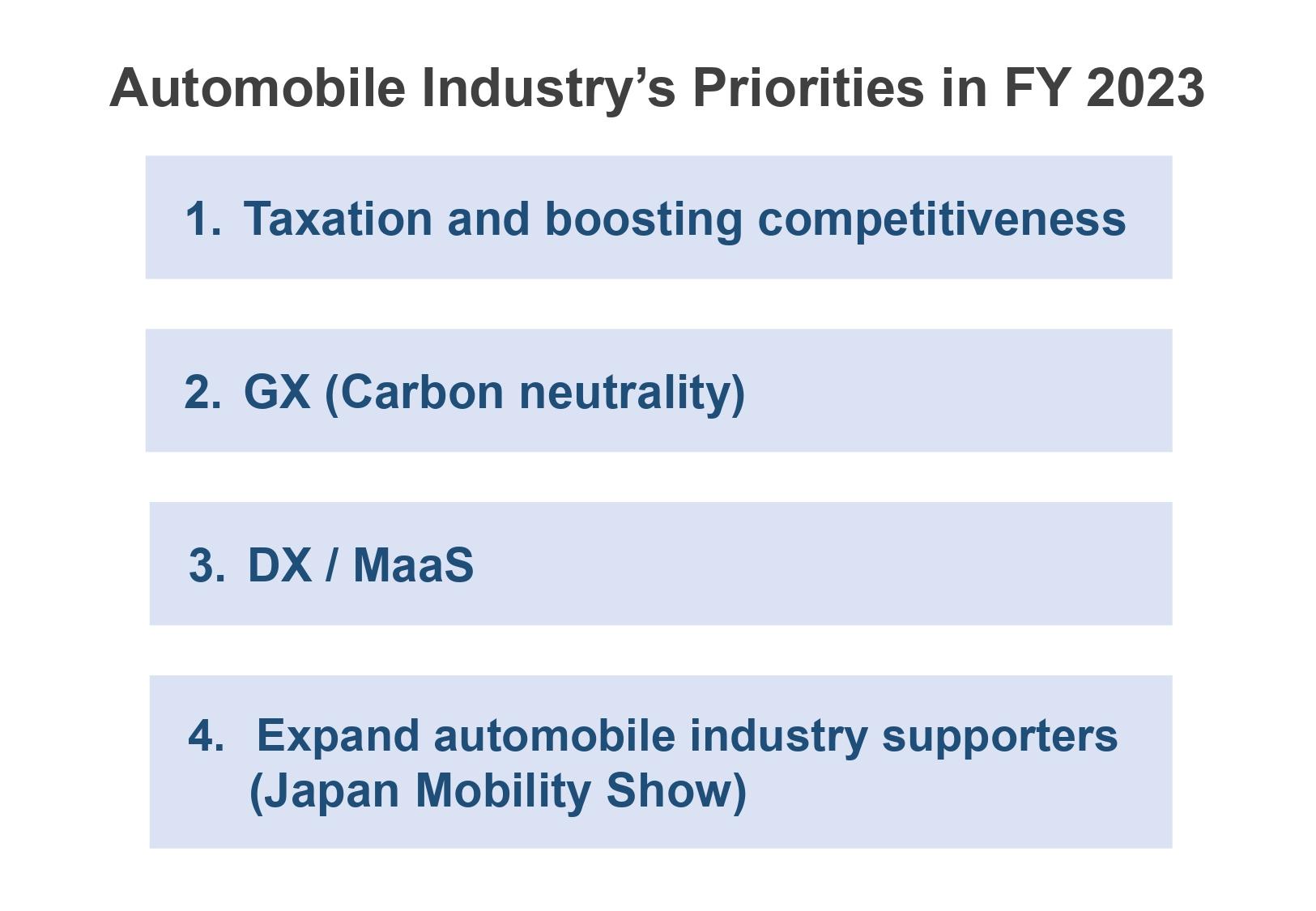
After announcing his resignation, Akio Toyoda has now said he will stay on as JAMA chairman. Toyota Times sheds light on this change.
Three key points for the Mobility Show
Next, the JAMA representatives were asked about progress toward the Japan Mobility Show and preparations for the G7 Hiroshima Summit in May. First, the Mobility Show.
The basic concept is an event where all Japanese industries come together to paint a brighter future. Our goal is 1 million visitors who will experience the exciting future that lies ahead for Japan.
We have three key points in mind for the show, the first being a platform for presenting the future. The idea is to inspire Japan by offering more than simply things to look at—experiences which people are moved by and want to share.
One aspect we really want to highlight is to have startups play a central role.
Even as startups face many hurdles, such as obtaining funding and establishing connections, we need them to play a leading role in shaping the future of Japan. Our second focus area is to work closely with these ventures.
And our third key point is to bring together experts from around the world to discuss and share information about the future of mobility from various perspectives. We hope to create the equivalent of a Davos Forum for mobility.
“Japan’s automobile industry is unique in having four heavy-duty vehicle manufacturers,” commented Chairman Toyoda. “I’d like to ask Mr. Katayama to speak more about our efforts on that front.”
We have formed a team between the four companies and are in the midst of discussions.
Until now, we’ve thought about things in terms of our trucks first, followed by the logistics companies and finally the customers. Now we’re looking to reverse that order.
How do logistics look from the perspective of the consumer? For example, what happens when packages can communicate with each other, and with trucks?
I feel like we are getting glimpses into a new society. When packages talk to each other, we need matching solutions. That is directly connected to DX (digital transformation) and GX (green transformation), and it offers really fascinating outcomes for customers.
The more partners and startups jump on board, the more our lives will change. Heavy-duty vehicles don’t exactly set hearts racing, so we’re working to give people a firsthand taste of the exciting future that awaits.
The conversation then turned to the G7 Hiroshima Summit.
Over the past two years, Japan’s auto industry has called for a proper understanding of carbon neutrality. The argument that a diversified world needs diversified options is gradually starting to gain traction overseas as well.
We recognize that action on climate change cannot wait—people around the world must do what they can now to reduce CO2 emissions across the board. We see a need to cut emissions in all aspects of society, which includes not only new vehicles but also the existing cars that are already on our roads.
The G7 summit is an invaluable opportunity to promote understanding of such matters. While continuing to actively pursue electrification through the spread of BEVs (battery electric vehicles) and other options, we will also work on trialing more diverse approaches to eliminate CO2 emissions.
At the press conference, JAMA also presented its four key areas for the 2023 fiscal year.

A video of the entire press conference is also available.
At last November’s press conference, Chairman Toyoda said that “this is where the real challenge begins.” This time around, the vice chairmen pledged a greater commitment to running JAMA and spoke of “tackling future challenges as a team.”
Make sure to keep a close eye on JAMA as they, together with 5.5 million industry colleagues, work for the good of Japan and for the future.

